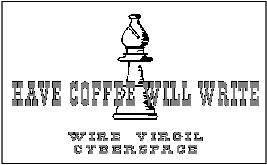THE OBESITY CODE…
The Obesity Code: Unlocking The Secrets Of Weight Loss
by
Jason Fung
When I was an undergraduate at Ohio University—The Orwellian Class of ’84—I was, for a time, a dual major in Magazine Journalism and History. I made the decision because I wanted to take (I dropped the latter because I could not handle a foreign language, my brain just doesn’t work that way.) I picked up the second major for the sole reason that I wanted to take Dr. Douglass Baxter’s “Historical Research & Writing Class—History 301—and you had to be a history major to get into the class—and later changed back to a single major when I completed the course (and remembered that I was no good at foreign languages, a graduation requirement for a Bachelor of Arts degree; Journalism was a Bachelor of Science or, more appropriately, a BS degree).
While the final project in that class was a 15-page paper, Dr. Baxter took us through a number of intermediate steps that focused on ever larger abstracts of the information that we would eventually include in our final paper. I wish more non-fiction authors had taken Dr. Baxter’s class. Reading Dr. Jason Fung’s The Obesity Code is a perfect example of that.
[Note: all underlined emphasis in my own, JH]
Fung’s book is some 250 pages of well-presented and written vital information, but the reader needs to start at the final two pages of Section Six, Chapter 19: The Last Piece of the Puzzle where Fung writes:
There are five basic steps in weight loss—
1. Reduce your consumption of added sugars.
2. Reduce your consumption of refined grains.
3. Moderate your protein intake.
4. Increase your consumption of natural fats.
5. Increase your consumption of fiber and vinegar.
The first 214 pages in five sections and 18 chapters provide all the detail you need to know why those five steps are indeed true, and after you know where Fung is going, you’ll read those chapters with far more understanding than if you were to follow the start-at-the-beginning-and-read-to-the-end traditional route. Perhaps what he writes next is the reason for why he organized the book in the way he did. Fung continues:
When it comes to the what to eat, you pretty much already knew the answer. Most diets very conspicuously resemble each other. There is far more agreement than discord. Eliminate sugars and refined grains. Eat more fiber. Eat vegetables. Eat Organic. East more home-cooked meals. Avoid fast food. Eat whole unprocessed foods. Avoid artificial colors and flavors. Avoid processed or microwavable foods. Whether you follow the low carb, low calorie, South Beach, Atkins or some other mainstream diet, the advice is very similar. Sure, there are particular nuances to each diet, particularly with respect to dietary fats, but they tend to agree more than they disagree. So why all the controversy?
Agreement does not sell books or magazines. We need to discover the latest and greatest superfood. Acai berries. Quinoa. Or need to discover the latest dietary villain. Sugar. Wheat. Fat. Carbohydrates. Calories. Vogue magazine does not carry headlines such as Dietary advice you all ready knew!
Then Fung leads into the final chapter of his book which is the real discovery.
All diets work in the short term. But we’ve been ignoring the long-term problem of insulin resistance. There is one more piece of the puzzle—a solution found many centuries ago. A practice that has been enshrined in the nutritional lore of virtually every population on earth. A tradition rapidly becoming extinct.
This tradition is the subject of the next chapter
And tomorrow’s post…






